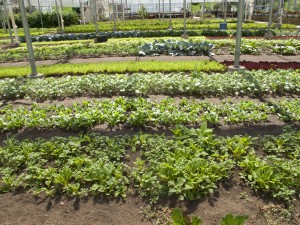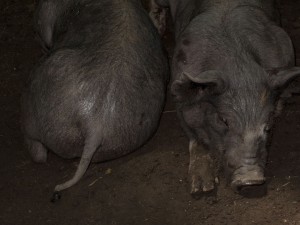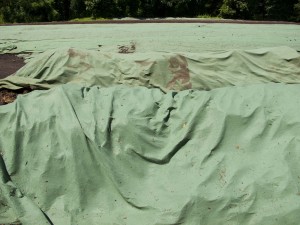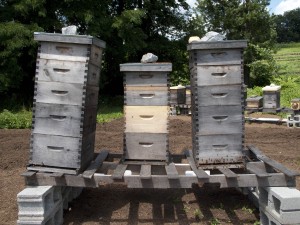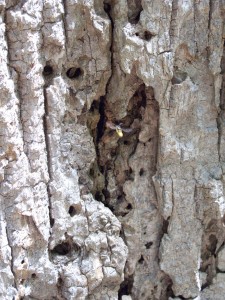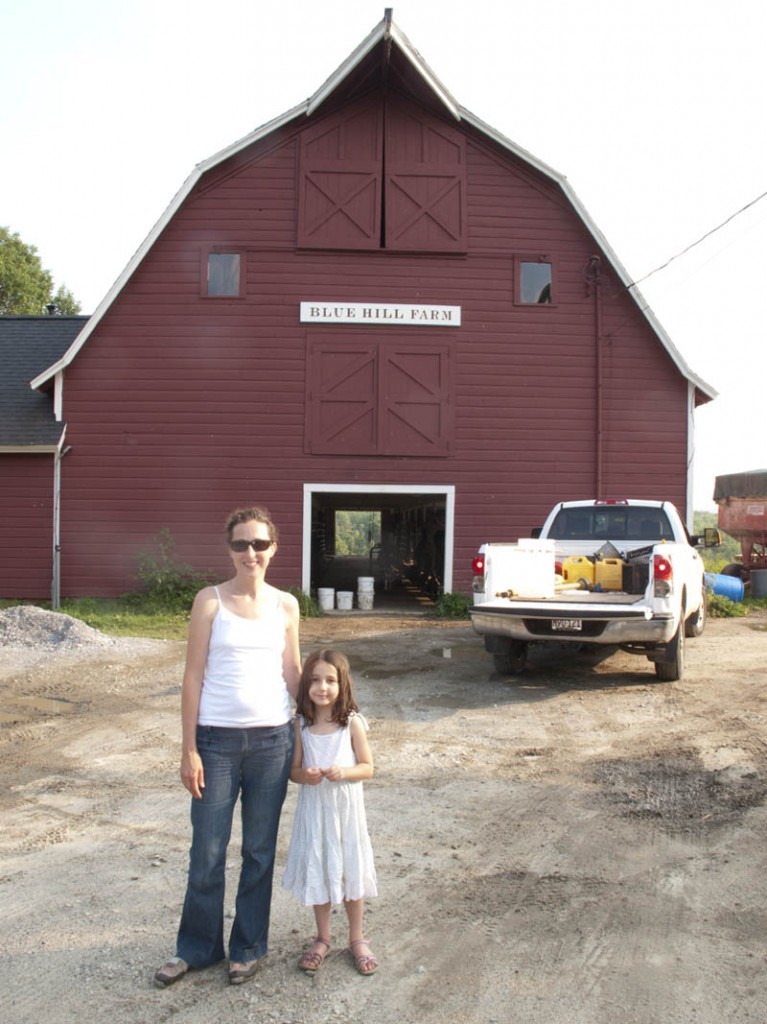
This is the final segment of my anniversary/local food combo platter, which now takes us to Monterey in the Berkshires. In my previous post I mentioned that the chef at Blue Hill Restaurant (Dan Barber) gets his amazing ingredients in part from Blue Hill Farm in the Berkshires. Blue Hill Farm was bought by Barber’s grandmother and has been in his family for 3 generations. They now have farmer Sean Stanton managing the farm, which has turned into a wonderful collaboration with Barber. Stanton works with Barber to obtain the tastiest milk, eggs and meat.
Neil and I figured that Blue Hill Farm was probably on Blue Hill Road. Duh. I emailed Stanton and asked if we could come out and visit the farm and he gave us the go-ahead. Interns (and fiancés) Daniel and Allison were getting the cows ready for milking when we got there, so we took a little stroll to see the chickens. They have 200+ laying hens that are the most free-ranged hens I’ve ever seen.
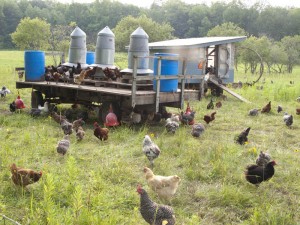
laying hens free-ranging
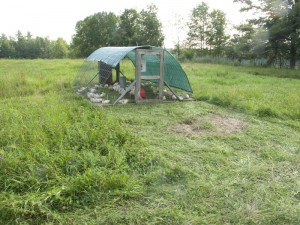
Chicken tractor
We then went to see the meat birds. They are in a chicken tractor, which is an enclosed run that is light enough to be pulled over different parts of the field. They rotate their cows to a new pasture every 12 hours. Then the chickens come in and do what chickens love best…pecking and scratching around for bugs. They pick through the cow patties and find nice juicy fly larvae. Yum. The chickens are fat and happy and there are fewer pests flying around the farm. Chickens also love to eat grass, so they are happiest outdoors.
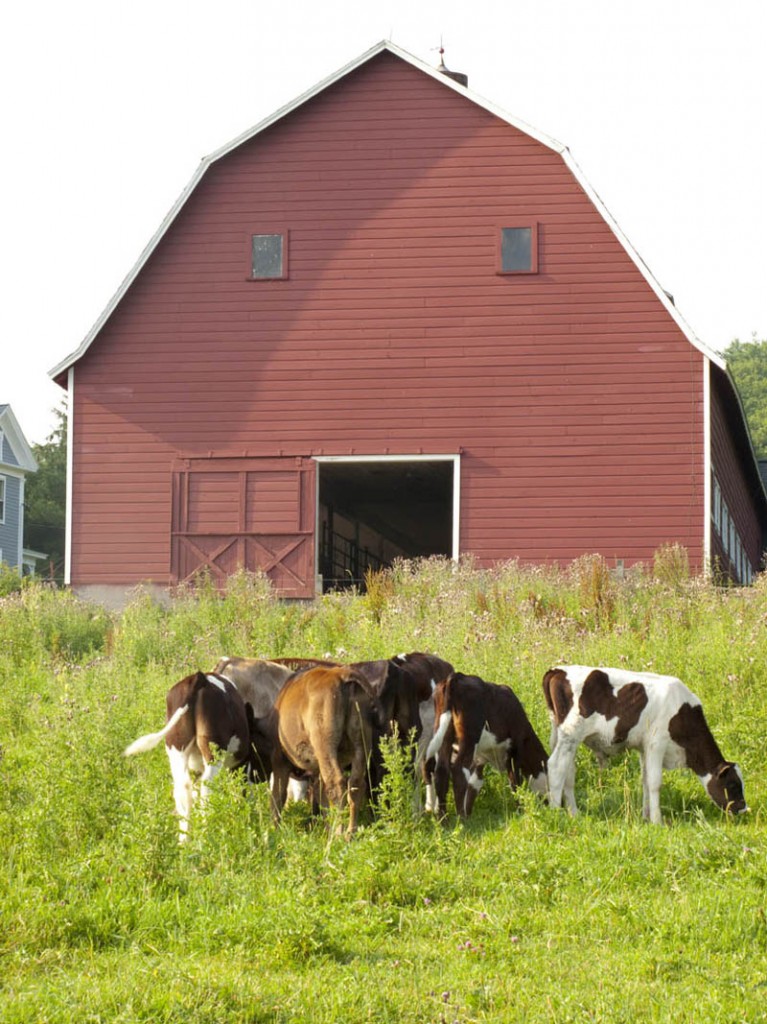
The farm was absolutely picturesque. There were green rolling hills, a beautiful barn, happy animals grazing and bunnies romping around. We headed up to the milking barn, where Allison was handling the milking. Daniel filled a suck-bucket (this is a new term for me and I love how awful it sounds!) with fresh milk for the calves. The calves are raised for veal, and again I couldn’t help but notice how much better their lives are on this farm than on factory farms. They are outside eating grass and drinking milk, which is a far cry from the dark, veal pens one usually hears about.
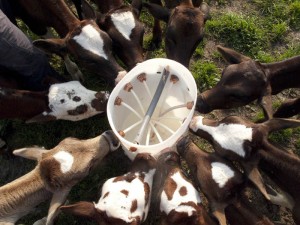
Calves drinking from suck bucket
Lindsay really enjoyed watching the milking and learned a lot about the cows. They sell some of their fresh, raw milk right at the farm. It’s in a fridge with a metal box to drop money into. I am excited about a source of raw milk, because I want to work on making cheese this fall and winter.
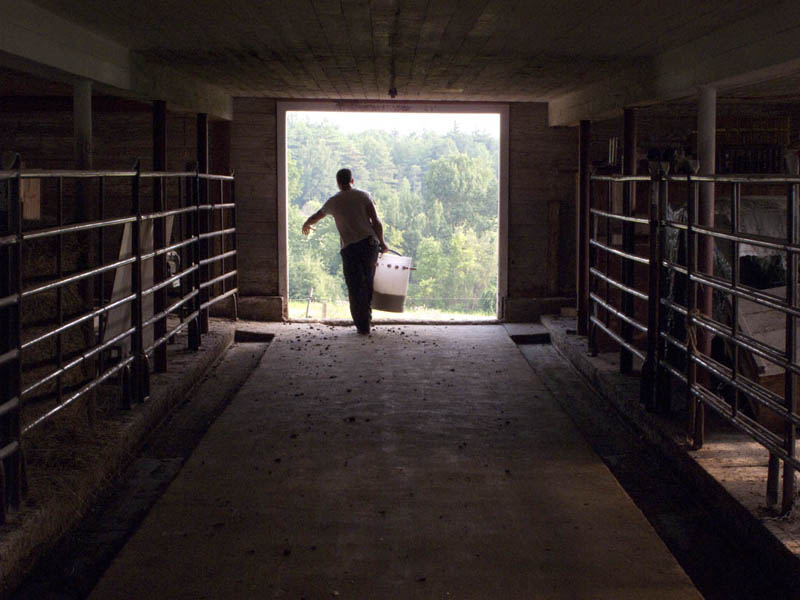
So we went from Blue Hill restaurant for our anniversary to Stone Barns and now to Blue Hill Farm. So where is Blue Hill Farm? It’s right across from Beartown State forest, which is where Neil and I got engaged. How appropriate.

